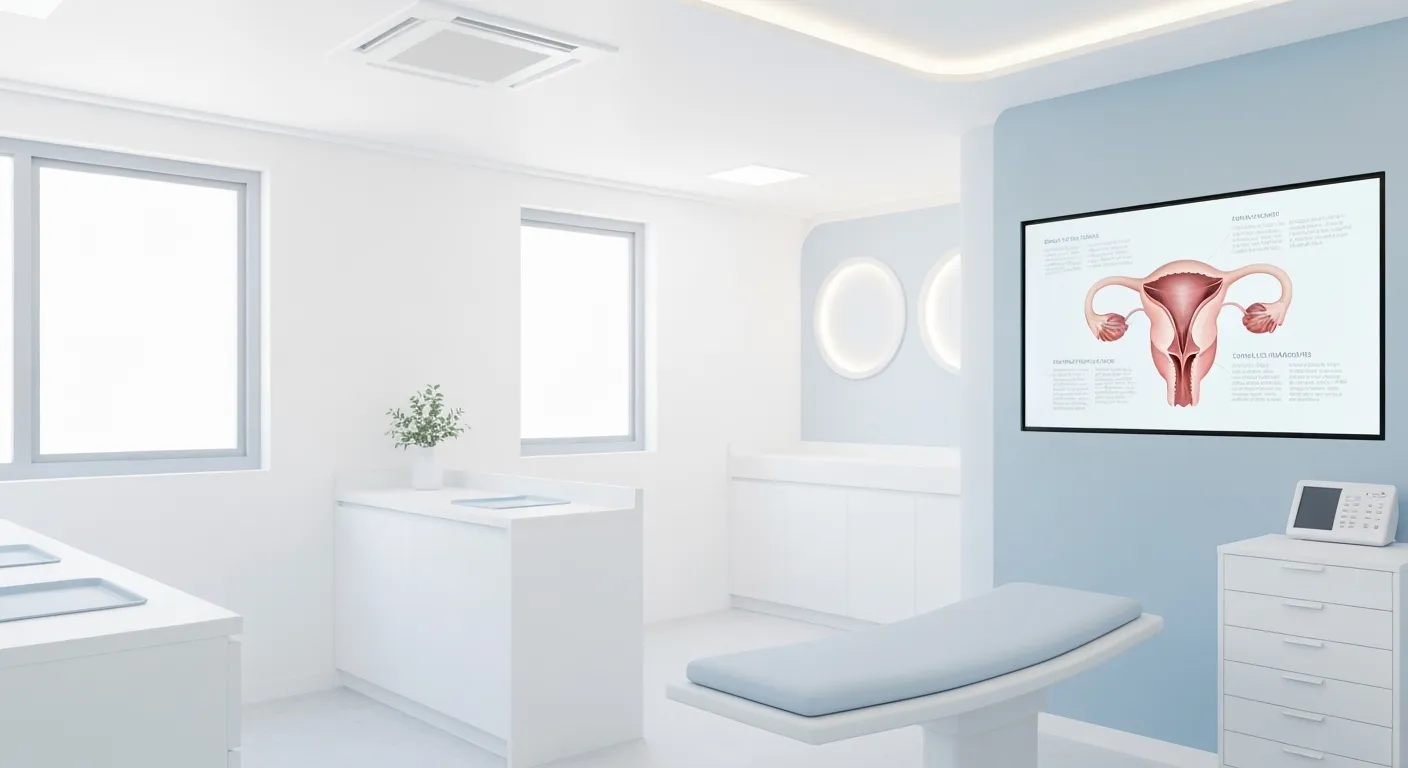Celebrating Courage: 8 Powerful Testimonials of Women's Gynecological Health Triumphs

Introduction to Uterine Fibroids
Uterine fibroids, medically known as leiomyomas or myomas, are benign tumors that develop within or on the uterus. Affecting a significant proportion of women during their reproductive years, these growths can vary widely in size, number, and location. While many remain asymptomatic, others cause symptoms that disrupt daily life, including heavy menstrual bleeding, pelvic pain, and reproductive challenges. This article unpacks the causes, symptoms, diagnosis, and a wide range of management strategies for uterine fibroids, guiding patients and clinicians toward effective and personalized care plans.
Understanding Uterine Fibroids: Causes and Risk Factors

What are uterine fibroids, and what causes them?
Uterine fibroids, also called leiomyomas or myomas, are benign (noncancerous) tumors that grow within or on the surface of the uterus. Made up of muscle and connective tissue, they are very common in women during their reproductive years. Fibroids can vary in size from tiny seed-like growths to large masses that fill the pelvis or abdomen, sometimes causing symptoms such as heavy bleeding, pelvic pain, pressure, and reproductive difficulties.
The precise cause of fibroids remains unclear. However, several factors appear to influence their development. Hormones play a significant role: estrogen and progesterone, which regulate the menstrual cycle, also stimulate fibroid growth. These hormones are especially active during pregnancy, leading to fibroid enlargement, while fibroids often shrink after menopause when hormone levels decrease.
Genetics also contribute, with certain gene mutations linked to increased risk. Racial and ethnicity factors are notable; Black women tend to develop fibroids earlier, have larger fibroids, and experience more severe symptoms compared to women of other ethnicities. Family history is another important element—if close relatives have fibroids, one’s risk increases.
Lifestyle and environmental factors can further predispose women to fibroids. These include obesity, high blood pressure, and diets high in red meat or processed foods. Exposure to environmental toxins such as endocrine-disrupting chemicals—found in plastics, pesticides, and cosmetics—has also been associated with fibroid formation. Additionally, lower levels of vitamin D have been linked to increased fibroid risk, possibly due to its role in regulating cell growth.
Fibroids tend to grow in response to hormonal fluctuations during reproductive life, markedly enlarging during pregnancy. After menopause, when hormone levels drop, fibroids often regress or become asymptomatic. Understanding these factors helps in managing and potentially preventing fibroids by focusing on hormonal balance, healthy lifestyle choices, and minimizing toxin exposure.
Recognizing Symptoms and Assessing Risk

What are the common symptoms and risk factors associated with uterine fibroids?
Uterine fibroids, also known as leiomyomas, are benign tumors that originate from the smooth muscle tissue of the uterus. They are highly prevalent, affecting up to 80% of women by age 50, especially those in their reproductive years. Many women with fibroids experience no symptoms and only discover their condition incidentally during routine pelvic exams for uterine fibroids or imaging tests for fibroids.
When symptoms do occur, they often include heavy or prolonged menstrual bleeding, which can lead to anemia. Women may also experience pelvic pain or a feeling of pressure, which can extend to the lower back, abdomen, or pelvis. Additional symptoms include frequent urination due to bladder pressure, constipation, pain during sexual intercourse, and a visible enlargement or bloating of the abdomen. These symptoms can significantly impact quality of life and, in some cases, fertility.
Several risk factors increase the likelihood of developing fibroids. Age is a critical factor, with the most rapid growth typically occurring between the ages of 30 and 50. Race also influences risk; Black women tend to develop larger and more numerous fibroids earlier in life and often experience more severe symptoms. A positive family history further elevates risk, suggesting a genetic component.
Lifestyle and environmental factors also play roles. Obesity has been linked to increased fibroid risk, possibly due to hormone imbalances associated with excess adipose tissue. High blood pressure and a diet high in red meat and processed foods are additional risk factors. Vitamin D deficiency has recently been recognized as a contributor, with low levels associated with increased fibroid growth.
Hormones like estrogen and progesterone are believed to stimulate fibroid development and growth. These tumors tend to shrink after menopause when hormone levels decline. Due to their impact on reproductive health, fibroids can cause complications during pregnancy, including increased risks of miscarriage, preterm delivery, abnormal fetal positions, and need for cesarean section.
Understanding these symptoms and risk factors is vital for early detection and management. Women experiencing significant symptoms should consult healthcare providers for appropriate evaluation and treatment options for uterine fibroids to improve their quality of life and reproductive outcomes.
Diagnostic Tools and Procedures for Uterine Fibroids

What diagnostic procedures and tools are used to identify uterine fibroids?
Detecting uterine fibroids involves a combination of physical examination and imaging tests. During a routine pelvic exam, a healthcare provider can sometimes feel irregularities in the shape or size of the uterus, suggesting the presence of fibroids. This initial clinical pelvic examination is a crucial step in the diagnostic process.
The most common and effective imaging modality for confirming fibroids is ultrasonography. Both transabdominal and transvaginal ultrasounds provide visual confirmation of fibroids, allowing doctors to determine their size, number, and location within or on the uterus.
For more detailed visualization, advanced imaging techniques like magnetic resonance imaging (MRI) are used. MRI provides high-resolution images that help differentiate fibroid types, especially when ultrasound results are inconclusive. It is particularly helpful in complex cases or when surgical planning is required.
Other specialized procedures enhance the diagnosis of particular fibroid types. Hysteroscopy involves inserting a thin scope into the uterine cavity, allowing direct visualization and assessment of submucosal fibroids. Saline infusion sonogram, also known as hysterosonography, involves filling the uterine cavity with saline to improve ultrasound imaging, clarifying the extent and position of fibroids.
Additional assessments include hysterosalpingography, which uses contrast dye to evaluate uterine shape and tubal patency, especially before fertility treatments. Laparoscopy, a minimally invasive surgical procedure, allows direct examination of the outside of the reproductive organs for external fibroids or other abnormalities.
Laboratory tests such as a complete blood count help evaluate anemia resulting from heavy bleeding attributable to fibroids, aiding in comprehensive patient assessment.
| Diagnostic Technique | Main Purpose | Additional Details |
|---|---|---|
| Pelvic Exam | Initial assessment of uterine size and shape | Can incidentally detect irregularities suggestive of fibroids |
| Transabdominal Ultrasound | Visual confirmation of fibroids | Provides a broad overview, useful in initial assessment |
| Transvaginal Ultrasound | Detailed imaging of uterine and fibroid morphology | More precise than transabdominal ultrasound |
| MRI | Detailed mapping of fibroid size, location, type | Guides complex cases and surgical planning |
| Hysteroscopy | Direct visualization inside uterine cavity | Useful for submucosal fibroids |
| Hysterosonography (Saline Infusion Sonogram) | Enhances ultrasound imaging of uterine cavity | Better delineation of fibroids near the endometrial lining |
| Hysterosalpingography | Uterine shape and tubal assessment | Often used in infertility evaluations |
| Laparoscopy | External examination of reproductive organs | Detects visible external fibroids or abnormalities |
| Blood Tests | Assess anemia and bleeding severity | Complete blood count to evaluate blood loss |
This combination of examination and imaging provides a comprehensive approach to diagnosing uterine fibroids, assisting healthcare providers in devising personalized treatment plans.
Medical Management Strategies for Uterine Fibroids

What are the medical, surgical, and non-invasive management strategies available for uterine fibroids?
Management of uterine fibroids depends on the severity of symptoms, size, location, and whether the woman wishes to preserve fertility. Initially, many women with asymptomatic fibroids are advised to undergo watchful waiting for fibroids. When treatment is necessary, options include various medical therapies for fibroids aimed at shrinking fibroids or alleviating symptoms.
Hormonal therapies play a significant role in managing fibroids. Gonadotropin-releasing hormone (GnRH) agonists and antagonists, such as leuprolide, goserelin, and triptorelin, temporarily induce a menopause-like state, which significantly reduces estrogen and progesterone levels, leading to shrinkage of fibroids and relief from bleeding and pain. GnRH antagonists, like elagolix and relugolix, act more rapidly to suppress these hormones without causing the initial surge associated with agonists.
Intrauterine devices (IUDs) that release progestin, such as the levonorgestrel-releasing IUS, are used primarily to control heavy menstrual bleeding associated with fibroids. These devices do not decrease fibroid size but help manage bleeding and reduce anemia. Tranexamic acid, an anti-fibrinolytic medication, is effective in reducing menstrual blood loss but does not influence fibroid growth.
Non-hormonal medications, including NSAIDs, are commonly used to alleviate pain and reduce bleeding. These drugs decrease prostaglandin production, which can lower menstrual flow and relieve pelvic discomfort.
Benefits and limitations of medical treatment
Medical therapies for fibroids are generally less invasive and can be effective symptom reducers, especially in women planning pregnancy or those who wish to avoid surgery. GnRH analogues provide rapid symptom relief and significant fibroid shrinkage, making them useful preoperatively. However, they are associated with menopausal side effects like hot flashes, decreased bone density, and mood changes when used long-term.
While progestin-releasing IUDs and NSAIDs control symptoms effectively, they do not reduce fibroid size, and their benefits are mainly symptomatic. Moreover, medications like GnRH agonists are typically prescribed for short durations due to side effects, with fibroids often regrowing after discontinuation.
Short-term versus long-term treatment considerations
Short-term use of hormonal therapies such as GnRH agonists and antagonists is common to reduce fibroid size before surgery or control severe symptoms. In contrast, long-term management relies on medications like ulipristal acetate, IUDs, and symptomatic treatment, with ongoing monitoring. Surgical options such as myomectomy and hysterectomy remain definitive when medical therapy fails or is contraindicated.
The evolving landscape of non-invasive treatments, including MRI-guided focused ultrasound and radiofrequency ablation, offers promising options that can preserve the uterus and improve quality of life, but more research is needed to establish their long-term efficacy.
In conclusion, medical management strategies for uterine fibroids provide effective symptom relief and fibroid size reduction in many cases. Treatment plans should be individualized, considering the patient’s reproductive goals, symptom severity, and potential side effects.
Minimally Invasive and Non-Invasive Treatment Options

Uterine fibroids are commonly treated with a variety of minimally invasive fibroid procedures and non-invasive therapies that aim to reduce symptoms and fibroid size while preserving the uterus when possible.
One effective non-invasive option is Uterine Artery Embolization (UAE), a procedure where radiologists inject tiny particles into the uterine arteries to cut off blood supply to the fibroids. This causes the fibroids to shrink by 30-50% and can significantly alleviate symptoms such as heavy bleeding and pelvic pressure. The procedure is usually performed on an outpatient basis with minimal recovery time, though some women may experience minor side effects like pain or temporary menstrual changes.
Focused ultrasound surgery (FUS), often MRI-guided, is a cutting-edge non-invasive treatment that uses high-energy sound waves to heat and destroy fibroid tissue. This technique allows women to resume normal activities quickly, often within a day, with minimal discomfort. However, long-term data on fibroid recurrence is still being gathered, and it is typically suitable for women with smaller, accessible fibroids.
MRI-guided procedures also include laser ablation and radiofrequency ablation. These methods involve guiding instruments under MRI or ultrasound to precisely target fibroids, destroying tissue with heat. Laparoscopic radiofrequency ablation involves inserting a probe through small abdominal incisions to deliver thermal energy directly to fibroids, offering benefits like reduced invasiveness and shorter recovery times.
Hysteroscopic procedures are suitable for fibroids that protrude into the uterine cavity (submucosal). Through the vagina and cervix, a hysteroscope allows surgeons to remove or destroy fibroids without abdominal incisions, making them ideal for smaller, accessible fibroids and usually requiring only a short recovery.
Compared to traditional open surgeries such as abdominal myomectomy or hysterectomy, these minimally invasive and non-invasive methods generally offer fewer complications, shorter hospital stays, and faster recovery. They’re especially appealing for women seeking uterine preservation, either for fertility or personal preference, and for those wishing to avoid the risks associated with extensive surgery.
Choosing the most appropriate treatment depends on individual factors like fibroid size, number, location, severity of symptoms, age, and reproductive goals. Consulting with a specialist can help determine the optimal approach based on the latest evidence and personalized health considerations.
Surgical Interventions: When and What to Expect

What are the medical, surgical, and non-invasive management strategies available for uterine fibroids?
Management of uterine fibroids varies based on symptoms, size, location, and fertility desires. Medical options include hormonal therapies such as GnRH agonists and antagonists to shrink fibroids or control symptoms, as well as intrauterine devices releasing progestin to reduce bleeding. Minimally invasive procedures like uterine artery embolization, focused ultrasound (FUS), and radiofrequency ablation aim to reduce fibroid size and symptoms while preserving the uterus. Surgical interventions such as myomectomy and hysterectomy are considered for larger or symptomatic fibroids, with hysterectomy being a definitive solution when childbearing is not desired. Non-invasive and conservative approaches are often preferred initially or in asymptomatic cases, with treatment tailored to individual patient needs and preferences.
Types of surgical procedures: myomectomy and hysterectomy
Myomectomy involves surgically removing fibroids from the uterus, preserving the uterus and potential fertility. It can be performed via hysteroscopy (for fibroids inside the uterine cavity), laparoscopy, robotic-assisted surgery, or open abdominal surgery, depending on fibroid size and location.
Hysterectomy, the removal of the entire uterus, is the most definitive treatment and is suitable for women who do not want future pregnancies or have severe symptoms. It can be done through abdominal, vaginal, laparoscopic, or robotic approaches.
Approaches: abdominal, laparoscopic, robotic assistance, hysteroscopic
The method chosen depends on fibroid size, number, location, patient health, and fertility plans.
- Abdominal surgery (laparotomy) is used for large, multiple fibroids.
- Laparoscopic and robotic-assisted surgeries are minimally invasive, resulting in less pain and quicker recovery; robotic-assisted methods provide enhanced precision.
- Hysteroscopic procedures are ideal for submucosal fibroids within the uterine cavity and typically offer rapid recovery.
Fertility considerations and surgical risks
Fertility preservation is a primary concern, making myomectomy the preferred option for women wishing to conceive. Hysterectomy eliminates fertility but offers a permanent solution.
Risks associated with surgery include bleeding, infection, adhesion formation, uterine rupture (after myomectomy), and potential damage to surrounding organs.
Morcellation, a technique often used to remove fibroids through small incisions, has raised safety concerns due to the risk of spreading occult cancer cells, such as leiomyosarcoma.
Recovery times and potential complications
Recovery varies by procedure:
- Hysteroscopic myomectomy: 1-3 days
- Laparoscopic/robotic myomectomy: 2-4 weeks
- Open abdominal myomectomy: 4-6 weeks
Hysterectomy recovery can take up to 6 weeks.
Potential complications include bleeding, infection, adhesions, incomplete removal, and, very rarely, injury to adjacent organs.
Discussing individual risk factors with a healthcare provider helps optimize outcomes and recovery planning.
Evaluating Treatment Efficacy, Risks, and Benefits

The treatment options for uterine fibroids vary widely in their effectiveness, advantages, and potential risks, making individualized assessment essential. Medications, including GnRH agonists and hormone therapies, often deliver short-term relief by shrinking fibroids and reducing bleeding, but they do not usually eliminate the fibroids entirely and can cause side effects such as hot flashes, fatigue, and bone loss. These drugs are typically used preoperatively or for symptom management rather than as a permanent solution.
Minimally invasive procedures like uterine artery embolization (UAE) and radiofrequency ablation have proven highly effective, with studies indicating symptom relief success rates of approximately 80-90%. UAE works by cutting off the blood supply to fibroids, leading to their shrinkage and alleviation of pressure and bleeding symptoms, while offering shorter recovery times. However, the impact on future fertility remains uncertain, and there is a small chance of fibroid recurrence. Radiofrequency ablation uses heat to destroy fibroid tissue precisely and is suitable for smaller fibroids, but long-term data is still emerging.
Surgical treatments such as myomectomy and hysterectomy are more definitive. Myomectomy involves the surgical removal of fibroids while preserving the uterus, particularly valuable for women wishing to maintain fertility. It generally offers excellent symptom resolution but carries risks like bleeding, adhesions, and fibroid recurrence, which can occur in about 15-30% of cases. Hysterectomy, the complete removal of the uterus, guarantees the elimination of fibroids and their symptoms but involves a longer recovery period and the loss of reproductive capacity. This option is typically reserved for women who do not desire future pregnancies.
Risks common to all procedures include procedural complications, bleeding, infection, and the rare potential spread of undiagnosed cancer, especially with the use of power morcellators during minimally invasive surgeries. Treatment success depends on appropriately matching the intervention to the patient's age, severity of symptoms, reproductive goals, and overall health. Therefore, a careful evaluation of the benefits versus the risks, along with patient preferences, guides optimal management strategies.
Natural and Lifestyle Approaches in Fibroid Management
Are there natural remedies, lifestyle changes, or dietary approaches that can help manage uterine fibroids?
Yes, there is increasing interest in natural and lifestyle-based strategies to support women with uterine fibroids. While scientific evidence is still evolving, many of these approaches focus on reducing risk factors and alleviating symptoms. Maintaining a healthy weight through regular exercise and reducing sedentary behavior has been shown to lower the risk of fibroids and help manage existing symptoms (Lifestyle modifications for uterine fibroids).
Diet plays a crucial role in overall uterine health. Consuming a diet rich in fruits, vegetables, especially leafy greens, berries, citrus, and cruciferous vegetables like broccoli and cabbage, can provide antioxidants and essential nutrients. Incorporating whole grains, lean proteins, fatty fish rich in omega-3 fatty acids, and healthy fats from sources like nuts and seeds may also support hormonal balance (Eating fruits and cruciferous vegetables to reduce fibroid risk).
Supplementation with vitamin D and vitamin A (through foods like carrots and sweet potatoes) has been associated with decreased fibroid risk. However, these should be taken under medical supervision (Fibroids natural treatment).
Stress reduction techniques, such as yoga, meditation, and mindfulness practices, may help control hormonal imbalances and improve overall well-being. Herbal remedies, including traditional Chinese medicine formulations, are used by some women; these should be approached cautiously and under the guidance of a healthcare professional due to limited scientific validation (Herbal preparations for uterine fibroids).
It is important to note that while these natural approaches can support symptom management and overall health, they are not substitutes for medical treatment, especially in cases of severe symptoms or large fibroids. Consulting healthcare providers before starting any new supplement or significant lifestyle change is essential to ensure safety and appropriateness (Uterine fibroids diagnosis and treatment).
Recent Advances and Emerging Treatments for Uterine Fibroids

Innovations in minimally invasive technologies
Recent developments in the treatment of uterine fibroids focus heavily on minimally invasive fibroid procedures that offer effective results while preserving the uterus. One such advancement is transcervical fibroid ablation using radiofrequency energy, which allows targeted destruction of fibroid tissue through a small instrument inserted into the cervix. Additionally, MRI-guided focused ultrasound (MRgFUS) utilizes high-energy sound waves precisely directed at fibroids, causing thermal destruction without incisions. These options have become increasingly popular due to their outpatient nature, reduced recovery times, and preservation of fertility in many cases.
Use of selective progesterone receptor modulators and GnRH antagonists
Hormonal therapy continues to play a vital role in fibroid management, with new medications expanding options. Selective progesterone receptor modulators like ulipristal acetate have demonstrated significant efficacy in shrinking fibroids and controlling bleeding, with a better side effect profile compared to traditional GnRH analogs. Meanwhile, GnRH antagonists such as relugolix and linzagolix rapidly suppress ovarian hormone production, leading to fibroid size reduction and symptom relief, with ongoing studies assessing their long-term safety and optimal dosing strategies.
Research into phytochemicals and targeted therapies
Innovative research is also exploring natural compounds and targeted drug delivery systems. Phytochemicals like EGCG from green tea and other plant-based agents show promise in laboratory studies for reducing fibroid growth and modulating tumor-associated pathways. Furthermore, biological agents such as collagenase, an enzyme that breaks down collagen in the fibroid matrix, hold potential for non-surgical reduction of fibroid volume. These approaches aim to provide less invasive, more personalized treatment options.
Ongoing clinical trials and personalized medicine approaches
Large-scale clinical trials are underway to evaluate these emerging therapies and refine personalized medicine strategies. Research at institutions such as NYU Langone focuses on identifying patient-specific factors—like genetic markers and hormone receptor status—that predict treatment success. Such initiatives aim to tailor interventions to individual patients, improving outcomes and reducing unnecessary procedures.
Role of lifestyle research and patient education
Increasing attention is being given to lifestyle modifications and patient education as adjuncts to medical therapy. Studies emphasize the importance of dietary changes, weight management, stress reduction, and reducing exposure to endocrine-disrupting chemicals to potentially decrease fibroid growth or recurrence. Educating women about these factors empowers them to participate actively in managing their condition, complementing clinical treatments.
| Area of Advancement | Approach | Benefits | Current Status |
|---|---|---|---|
| Minimally invasive technologies | Radiofrequency ablation, MR-guided focused ultrasound | Outpatient, uterus-preserving, quick recovery | Widely available, ongoing research |
| Hormonal therapies | GnRH antagonists, selective progesterone receptor modulators | Rapid symptom control, fibroid shrinkage | Approved and in trials |
| Natural and targeted therapies | Phytochemicals, collagenase | Less invasive, potential long-term solutions | Laboratory and early clinical studies |
| Personalized medicine | Genetic and receptor profiling | Tailored treatment plans | Under active investigation |
| Lifestyle and education | Diet, environmental exposure reduction | May reduce fibroid size and recurrence | Increasingly emphasized |
Staying at the forefront of research allows for emerging treatments that are safer, more effective, and aligned with patient preferences, providing new hope for those affected by uterine fibroids.
Prevention, Early Diagnosis, and Supportive Care

Uterine fibroids pose a significant challenge in prevention due to their largely unknown exact causes, which involve complex interactions of hormonal, genetic, and environmental factors. Nevertheless, early diagnosis plays a pivotal role in managing fibroids effectively. Regular gynecologic check-ups, including pelvic exam for uterine fibroids and imaging such as ultrasound or MRI for fibroid imaging, are essential to detect fibroids in their initial stages. These screening methods allow healthcare providers to monitor fibroid development closely, especially in women at higher risk, such as those with a family history or belonging to certain ethnic groups.
Early detection is vital for preventing severe complications. When diagnosed promptly, women can access a variety of treatment options—ranging from medications for fibroids that control symptoms to minimally invasive fibroid procedures —that are tailored to the fibroids' size, location, and impact on fertility. This proactive approach reduces the risk of complications like heavy bleeding, anemia, pain, and fertility issues.
Supportive care further enhances management by focusing on symptom relief and improving quality of life. Symptom management includes medications such as NSAIDs for pain, hormonal therapies like GnRH agonists, and lifestyle modifications, such as maintaining a healthy weight and diet, which can influence fibroid growth (Fibroids natural treatment). Counseling and education are equally important, enabling women to understand their condition and make informed decisions about treatment options.
Supportive care also involves regular follow-up appointments to assess fibroid progression and response to therapy. Individualized monitoring ensures that women receive appropriate interventions at the right time, minimizing unnecessary surgeries and preserving reproductive potential when possible. Overall, integrating prevention through awareness, early diagnosis via routine screening, and comprehensive supportive care creates a proactive framework to manage uterine fibroids effectively, reducing the burden of symptoms and enhancing overall health.
Holistic and Alternative Therapies: Complementary Options
What holistic and alternative approaches exist for fibroid management, and what is their effectiveness?
Managing uterine fibroids can extend beyond traditional medical treatments by including holistic and alternative approaches. These strategies focus on diet, stress reduction, natural remedies, and mind-body practices that aim to improve overall health and alleviate symptoms.
One of the most accessible and supportive methods is dietary modification. Consuming a diet rich in fruits, vegetables, whole grains, legumes, lean proteins, and healthy fats like omega-3 fatty acids may help reduce systemic inflammation and support hormonal balance. Foods high in vitamins D and A, especially oily fish, carrots, and sweet potatoes, have been associated with a lower risk of fibroid growth. Some studies suggest that maintaining optimal vitamin D levels may inhibit fibroid development or growth.
Stress plays a significant role in hormonal regulation. Techniques such as yoga, meditation, massage therapy, tai chi, and mindful breathing can lower stress hormones like cortisol, which might influence fibroid growth and symptom severity. Relaxation exercises, combined with regular physical activity, can improve mood and overall well-being.
Acupuncture is another traditional Chinese medicine practice gaining interest in fibroid management. Preliminary evidence indicates that acupuncture may help shrink fibroids and relieve associated symptoms, including pain and pressure. However, more high-quality research is needed to confirm its efficacy.
Despite the promising anecdotal reports, scientific studies supporting the effectiveness of many alternative treatments are limited and often small in scale. Herbal remedies, such as Radix Paeoniae Rubra or Panax Notoginseng, are used in traditional medicine systems, but their safety, dosage, and long-term effects require further investigation. For detailed insights on herbal preparations and research, refer to dedicated studies in this area.
Integrating such holistic approaches with conventional care can offer a balanced and personalized strategy. Patients should discuss these options with their healthcare providers to ensure safety, avoid potential interactions—especially with medications—and tailor a comprehensive plan that considers individual health goals.
In summary, while holistic and alternative therapies can provide symptom relief and possibly support fibroid management, they should complement, not replace, evidence-based care. Ongoing research continues to explore their full potential, emphasizing the importance of an integrative approach.
Empowering Patients: Education, Decision-Making, and Prognosis

Understanding uterine fibroid symptoms, diagnostic results, and treatment options is crucial for patient empowerment. Healthcare providers should communicate clearly about common signs such as heavy, prolonged, or painful menstrual bleeding, pelvic pressure, urinary difficulties, and lower back pain. Diagnostic tools like ultrasound, and MRI are vital in confirming fibroid presence, size, and location, helping to tailor personalized treatment plans.
Patients need comprehensive information on available treatments, including medications (GnRH agonists, IUDs, NSAIDs), minimally invasive procedures (focused ultrasound, uterine artery embolization), and surgical options like myomectomy or hysterectomy. The choice depends on factors such as fibroid size, number, location, symptoms, and the patient's desire for future fertility.
Fostering informed decision-making involves discussing how treatments might influence fertility and pregnancy outcomes, especially in women wishing to conceive. For instance, myomectomy preserves fertility, whereas hysterectomy does not. Patients should understand potential risks, recurrence chances, and the natural course of fibroids, which often grow or shrink depending on hormonal levels, particularly shrinking after menopause.
Providing resources such as credible websites, support groups, and follow-up care plans helps women stay engaged in their health journey. Encouraging questions and shared decision-making promotes a sense of control and prepares patients for realistic outcomes, making management more effective and aligned with individual goals.
Conclusion
Managing uterine fibroids requires a comprehensive, individualized approach that takes into account the size, location, symptoms, and reproductive goals of each patient. With advances ranging from improved diagnostic tools to innovative minimally invasive treatments, women have a variety of options to effectively handle fibroids while preserving fertility when desired. Alongside medical and surgical treatments, lifestyle modifications and holistic practices can support symptom relief and overall well-being. Early diagnosis and patient education empower women to make informed decisions and navigate their treatment journey successfully. As research progresses, the promise of personalized care and novel therapies continues to enhance outcomes, improving quality of life for those affected by uterine fibroids.





.png)